
Student Leadership Competencies Resource Guide
The Student Leadership Competencies Resource Guide provides a synopsis of each of the 60 Student Leadership Competencies, along with guiding questions, activities, resources, and tools. This succinct book even includes new resources such as the Student Leadership Competencies Taxonomy, 6 Domains of Learning and Development, the Youth Leadership Model, as well as information on the Student Leadership Competencies Inventory, Student Leadership Competencies 360 Evaluation, the iOS app, and the badging program.
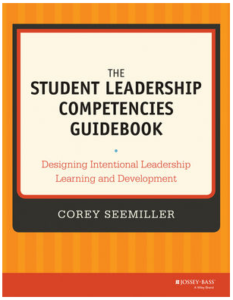 The Student Leadership Competencies Guidebook
The Student Leadership Competencies Guidebook
The Student Leadership Competencies® Guidebook is a comprehensive resource for designing intentional curriculum on leadership competency development using 60 leadership competencies derived from analyzing standards, models, and theories of leadership as well as the outcomes of all 522 accredited academic programs in higher education. Find out more information about the research behind this book at the Student Leadership Competencies website.
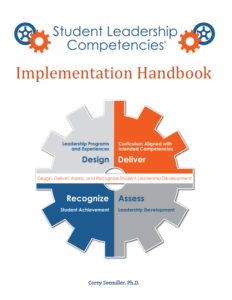 Student Leadership Competencies Implementation Handbook
Student Leadership Competencies Implementation Handbook
This downloadable eBook includes “how to” overviews, resources, and tools including how to select competencies, marketing and branding strategies, designing competency-based curriculum, engaging in assessment, and recognizing achievements. This book is part of the Student Leadership Competencies Toolkit.
![]()
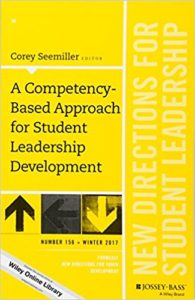 A Competency-Based Approach for Student Leadership Development (Editor)
A Competency-Based Approach for Student Leadership Development (Editor)
New Directions for Student Leadership, Number 156.
Although the use of competencies has a rich history in organizations, the use of leadership competencies with college students is only in its infancy. But, as funding becomes scarcer and students become more discretionary with their time, using a leadership competency approach can offer institutions quantifiable data to prove the value of leadership development to students, parents, employers, alumni, donors, and institutional administrators. And leadership competencies might just provide the roadmap we need to develop the ethical and competent leaders we need in our world today.
Ch. 1: This chapter provides an overview of leadership competencies including the history of emergence, contemporary uses, common frameworks, challenges, benefits, and future implications.
Ch. 3: This chapter describes how to use a leadership competency approach to help students develop their five signature themes from the Clifton StrengthsFinder assessment into strengths.
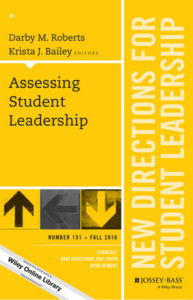 Assessing Student Leadership Competency Development
Assessing Student Leadership Competency Development
New Directions for Student Leadership, Number 151, Ch. 4.
This chapter explores how institutions can ensure effective assessment of student leadership development using a competency-based approach.
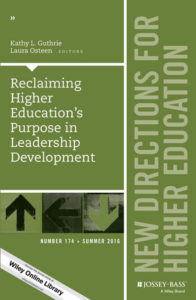 Leadership Competency Development: A Higher Education Responsibility
Leadership Competency Development: A Higher Education Responsibility
This chapter provides an overview of leadership competency development as a critical component of higher education.
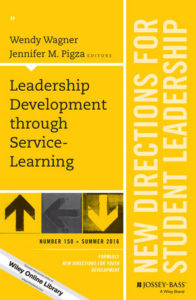 Complementary Learning Objectives: The Common Competencies of Leadership and Service-Learning
Complementary Learning Objectives: The Common Competencies of Leadership and Service-Learning
This chapter provides a framework for intentionally designing and assessing service-learning experiences that contribute to leadership competency development of students.
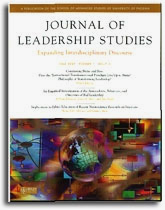 The Common Language of Leadership
The Common Language of Leadership
Journal of Leadership Studies, Volume 7, Issue 1, pp. 33-45.
This article outlines the results of a comprehensive examination of learning outcomes of 475 academic programs within 72 academic accrediting organizations in regard to student leadership development. The purpose of the study was twofold: (a) to understand better what competencies college students need to develop in order to engage in leadership in their respective career fields and (b) to use research findings to develop a list of leadership competencies across academic disciplines, serving as a “common language” for use in program planning, course development, as well as individual student advising and mentoring.
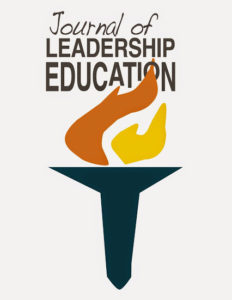 Creating a Taxonomy of Leadership Competency Development
Creating a Taxonomy of Leadership Competency Development
Journal of Leadership Education, Volume 19, Issue 1, pp. 119-131.
This article describes the research of a Delphi study resulting in the creation of a 5-tier taxonomy for scaffolding the Student Leadership Competencies by level of complexity.
 An Integrative Six‐Domain Model of Employee Training and Development
An Integrative Six‐Domain Model of Employee Training and Development
New Horizons in Adult Education and Human Resources, Volume 31, Issue 3, pp. 25-46.
Building on the work of the foundational models of training and development, this article proposes a new “six‐domain” model for structuring employee development initiatives in organizations, which positions learning within domains situated in an intentional developmental manner.
 A Psychometric Analysis of the Student Leadership Competencies Inventory
A Psychometric Analysis of the Student Leadership Competencies Inventory
Journal of Leadership Education, Volume 17, Issue 4, pp. 146-168.
This article offers an analysis of the measurements included in the Student Leadership Competencies Inventory to assess for validity.
 A Competency-Based Model of Youth Leadership Development
A Competency-Based Model of Youth Leadership Development
Journal of Leadership Education, Volume 17, Issue 1, pp. 56-72.
This article provides an analysis of prevalent leadership competencies embedded in four professional preparation frameworks, three research studies, and objectives of four large national youth leadership organizations to create a holistic youth leadership competency development model
 Preparing Leaders of Tomorrow: An Analysis of Leadership Competencies within Accredited Academic Program Learning Outcomes
Preparing Leaders of Tomorrow: An Analysis of Leadership Competencies within Accredited Academic Program Learning Outcomes
Journal of Leadership Studies, Volume 15, Issue 1, pp. 6-27.
This article outlines the findings from the 2019 analysis of 36,327 learning outcomes from 605 academic programs within 83 higher education accrediting agencies to identify the most prevalent leadership competencies across a multitude of academic disciplines.
The types of workforce competencies included in academic learning outcomes and the depth to which they are focused can vary from program to program and degree level to degree level. This variance may result in vast differences in broad areas of professional preparation for graduates as they enter the workforce. It is imperative to understand the extent that generalized workforce and leadership competencies are embedded into academic programs’ learning outcomes to ascertain a program’s commitment to developing not just a technically competent workforce but also one that has the skills for success in the workplace in general.